Digital Detox: 7 Tips To Unplug and Connect With Your Kids
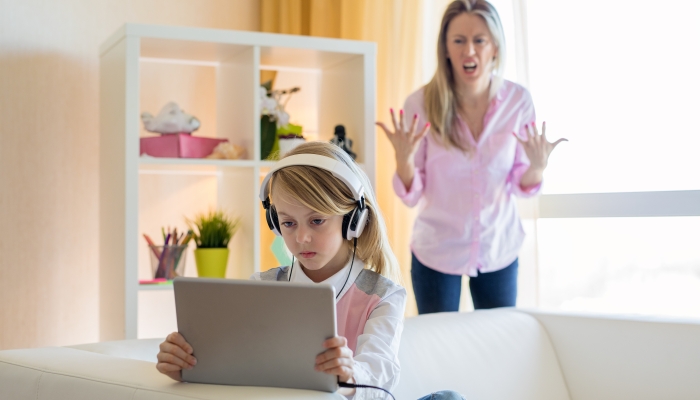
- A digital detox is a break from screen time and media use for parents and children.
- A digital detox is an opportunity to spend quality family time together while resetting your family’s relationship with technology.
- A digital detox should be sustainable and realistic so your family can achieve it together.
Limiting screen time is hard to do when screens have become such a huge part of our lives. Children are exposed to screens everywhere, even when parents try to set boundaries.
Teachers use them in the classroom, and we rely on them for work. For kids with special learning needs, screens are an essential tool for reading and communication.
In addition, we use electronic devices to keep in touch with family, stay connected to our children’s schools, and manage their activities.
However, we know it can negatively impact our kids’ behavior, sleep patterns, and friendships when they spend too much time on screens. Check out our digital detox guide to help you unplug and connect with your kids.
Digital Detox for Families: What Parents Should Know
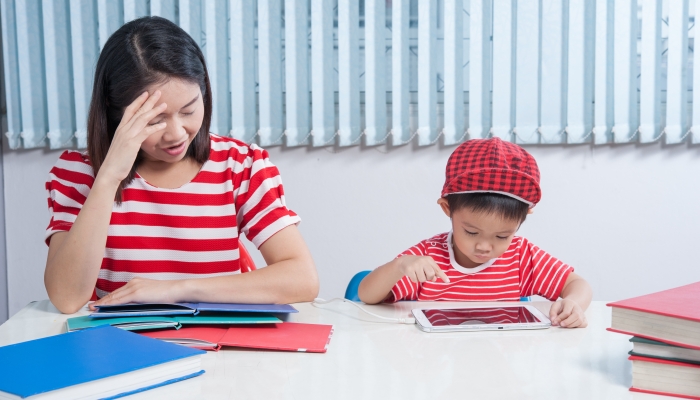
A digital detox may sound appealing, but what is it exactly? Digital detoxing encourages families to take stock of how much time everyone in the family spends engaged with digital technology, digital devices, playing video games, and using social media.
A digital detox for families aims to change unhealthy habits you may have developed around your smartphones and devices by taking some time to live screen-free, anywhere from a day to a week.
Putting down your devices as a family and having an open conversation about the influence of technology with your kids will help you set new tech boundaries and encourage healthy habits.
How Much is Too Much Screen Time?
The American Academy of Pediatrics (AAP) has recently changed its advice about screen time limits. Although they once advised that children should spend no more than two hours a day on screens, they have now changed their guidance.
In recognition of how important electronic devices have become to modern daily life, the AAP’s new policy, Media Use in School-Aged Children and Adolescents, aims to help parents institute healthier habits around digital technology and limit screen time.
Some of their recommendations include:
- Ensure your children get at least one hour of exercise a day and eight to twelve hours of sleep at night.
- Keep screens out of bedrooms and stay screen-free for an hour before bedtime.
- Create digital and media-free times on a regular basis, like a digital detox.
- Encourage new hobbies and seeing friends in real life.
- Co-view media and entertainment with your child.
- Establish rules about time spent with technology and social media use with your child.
Why Is It Important to Do a Digital Detox?
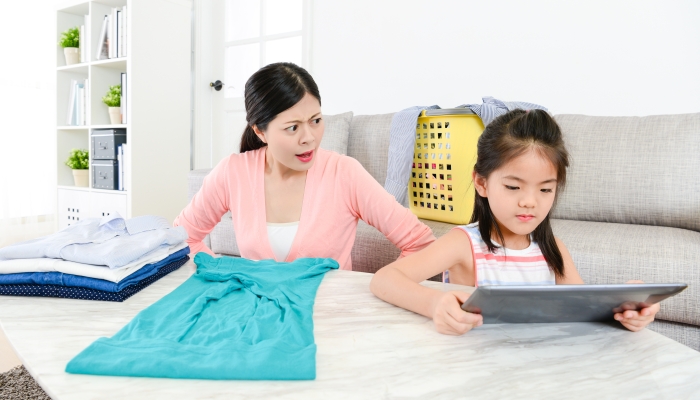
While technology has made our lives easier in many ways and has big benefits for education and accessibility, studies suggest that excessive screen time and overuse of electronic media can have a negative impact on children. That’s why taking a digital break is important.
Researchers found that watching two hours of TV or media a day at age two increases problems with self-regulation in young children. Another study found an association between increased screen time and higher anxiety and depression in teens.
More research is needed, but many families also report an impact on their children’s mental health, sleep, and behavior when all their spare time is spent on phones, watching TV, playing video games, or using technology.
What Are the Signs That Your Family Needs a Digital Detox?
How do you know if you need a digital detox for your family? Here are some common signs that it’s time to detox:
|
|
Guide on How to Do a Digital Detox as a Family
A digital detox shouldn’t be an additional burden on your ever-expanding to-do list. Instead, it should help reduce stress on your family life rather than fill you with worry that you’re not doing it right.
How Long Should a Family Digital Detox Last?
For a digital detox to have an impact, it should be sustainable and realistic for your family life. It may not be practical for school or work for you to go cold turkey off electronics for a week, and that’s okay.
Try one of the following formats:
| Digital-Free Day |
|
| Week Long Digital Break |
|
| Digital-Free Weekend |
|
How Often Should You Do a Digital Detox As a Family?
Whether your detox is a week, a weekend, or just a day, once you’ve tried it, you can make it a regular part of your family’s routine.
Maybe one day a month is the most doable for your family. Perhaps you make it a regular habit every time you vacation. Or, a few hours per week that you designate as screen and media-free might be the most doable for you.
Develop a routine around your detox, so your family can look forward to it. For example, on the last Sunday of every month, you have pancakes for breakfast to start your digital detox day.
The Do’s of a Digital Detox
For a successful digital detox that leaves your family feeling refreshed, try the following:
- Follow the same rules you’re setting for your kids.
- Help your kids find alternatives by planning fun activities.
- Choose a realistic length of time that you can stick to.
- Follow new norms when the detox is over, like not having phones at the dinner table or shutting off all devices an hour before bed.
- Be a good example and model these behaviors for your kids.
- Unfollow accounts on all devices that are inappropriate or waste time.
- Review parental controls on all your child’s phone, tablet, and social media accounts.
- Reward yourselves with a family movie night or some new board games for a job well done!
7 Tips on How Parents and Kids Can Have Fun During a Digital Detox
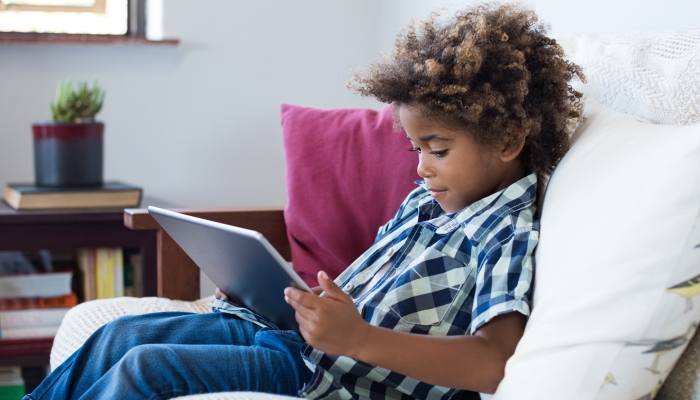
Now that you’re going to take the plunge, how will you fill up your family time? There are lots of fun activities you can try on detox days to help everyone step away from the screens.
Get Outside
Reconnect with nature by hiking, going to the beach, or trying something new like rock climbing or roller skating. Dust off your bikes, play basketball, go mini-golfing, or do anything that gets you and your kids outdoors together.
Explore Old Electronics
Do you have a CD player, walkman, tape deck, or even a record player in the attic? Get out your old electronics and show your kids how we used to listen to music – they’ll be fascinated!
Reading Together
Head to the library and let your kids choose some books. Your kids are never too old for you to read to them. You’d be surprised how much older kids still like being read to. So spend some time reading books aloud as a family to reawaken their interest in reading.
What’s Cookin’?
Are any old cookbooks lying around? Explore them together and find a recipe you can make as a family without using your phone or tablet.
Family Photo Shoot
Try a family photo shoot without using smartphones. Instead, use a disposable or old camera you might have that still works. Have your kids take the pictures. They’ll be amazed at the results when you get the film back. It might even spark a new hobby!
Get Crafty
Get out the paints and glue sticks and try some fun family crafting. Clay pottery, photo collage, making wreaths at holiday time, painting – it doesn’t matter what the project is, as long as you’re doing it together.
Garage Sale
If you’ve been meaning to clean out the attic or garage, this might be the perfect time to do it. Get your kids involved in sorting outgrown toys and clothes. Then, draw up price tags, make some signs around the neighborhood, and organize a good old-fashioned garage sale.
References
- COUNCIL ON COMMUNICATIONS AND MEDIA, David Hill, Nusheen Ameenuddin, Yolanda (Linda) Reid Chassiakos, Corinn Cross, Jenny Radesky, Jeffrey Hutchinson, Alanna Levine, Rhea Boyd, Robert Mendelson, Megan Moreno, Wendy Sue Swanson, MBE; Media Use in School-Aged Children and Adolescents. Pediatrics November 2016; 138 (5): e20162592. 10.1542/peds.2016-2592 https://publications.aap.org/pediatrics/article/138/5/e20162592/60321/Media-Use-in-School-Aged-Children-and-Adolescents
- Khouja, J.N., Munafò, M.R., Tilling, K. et al. Is screen time associated with anxiety or depression in young people? Results from a UK birth cohort. BMC Public Health 19, 82 (2019). doi: 10.1186/s12889-018-6321-9 https://bmcpublichealth.biomedcentral.com/articles/10.1186/s12889-018-6321-9
- Radesky, Jenny S., Michael Silverstein, Barry Zuckerman, Dimitri A. Christakis; Infant Self-Regulation and Early Childhood Media Exposure. Pediatrics May 2014; 133 (5): e1172–e1178. 10.1542/peds.2013-2367 https://publications.aap.org/pediatrics/article-abstract/133/5/e1172/32777/Infant-Self-Regulation-and-Early-Childhood-Media

Related Posts

Eye Conditions and Syndromes, Visual Impairment
Neuralink Announces Plans to Restore Sight to the Blind with Brain Chip
Elon Musk’s company Neuralink has announced plans to begin human trials of its new “Blindsight” brain chip by the end of 2025.

Parenting
Sensory Wall Art: 5 Tips to Create a Room Your Blind or Low-Vision Child Will Love
Even if your child can’t see their surroundings, personalizing and decorating their room with thoughtful, sensory-friendly design can make a big difference in their confidence, independence, and joy.
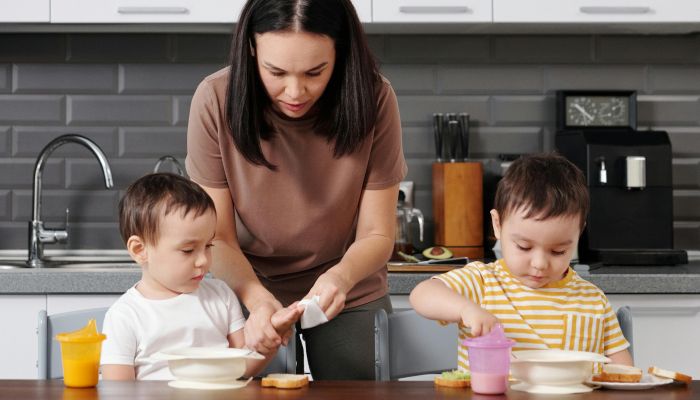
Parenting
4 Tips to Manage Twins Alone as a Single Parent
Taking care of twins alone as a single parent can feel overwhelming. Learn practical ways to help lighten the load.